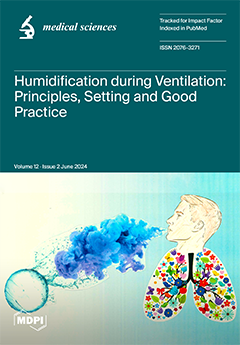Background: Maternal diabetes mellitus (MDM) is associated with increased risks for adverse neonatal outcomes. However, the impact of MDM on neonatal outcomes in Bisha, a city in Saudi Arabia, is not well documented. This study aims to investigate the impact of MDM on
[...] Read more.
Background: Maternal diabetes mellitus (MDM) is associated with increased risks for adverse neonatal outcomes. However, the impact of MDM on neonatal outcomes in Bisha, a city in Saudi Arabia, is not well documented. This study aims to investigate the impact of MDM on neonatal outcomes in the Maternity and Children’s Hospital (MCH), Bisha, Saudi Arabia. Methods: A retrospective cohort study was conducted on 181 pregnant women with diabetes and their neonates who were diagnosed at the Maternity and Children’s Hospital (MCH), Bisha, Saudi Arabia, between 5 October 2020 and 5 November 2022. The primary outcome was a composite of adverse neonatal outcomes, including stillbirth, neonatal death, macrosomia, preterm birth, respiratory distress syndrome, hypoglycemia, and congenital anomalies. Logistic regression analyses were used to adjust for potential confounders. Results: The total sample size was 181. The average age of patients was 34 years (SD = 6.45). The majority of the patients were diagnosed with GDM, 147 (81.2%), and pre-GDM, 34 (18.8%). Neonates born to mothers with MDM had a higher risk of adverse neonatal outcomes compared to those born to mothers without MDM (adjusted odds ratio [aOR] = 1.46, 95% confidence interval [CI]: 1.25–1.70). The risks of macrosomia (aOR = 1.74, 95% CI: 1.38–2.19), LBW (aOR = 1.32, 95% CI: 1.06–1.66), and RDS (aOR = 1.57, 95% CI: 1.28–1.93) were significantly higher among neonates born to mothers with MDM. The types of DM were statistically significant in terms of their correlation with the following neonatal outcomes: hypoglycemia (
p-value = 0.017), macrosomia (
p-value = 0.050), and neonatal death (
p-value = 0.017). Conclusions: MDM is associated with an increased risk of adverse neonatal outcomes in Bisha. The early identification and management of MDM may improve neonatal outcomes and reduce the burden of neonatal morbidity and mortality in this population.
Full article





